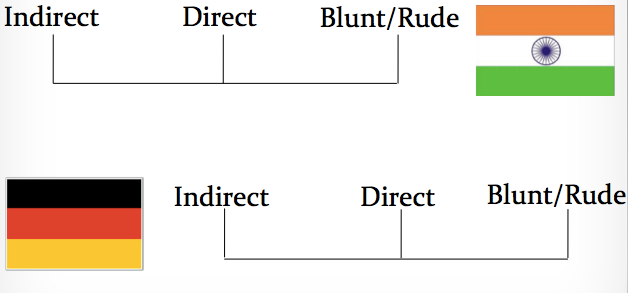
This refers to the individual’s orientation toward attention for self versus others. The other dimension in facework is the self-face and other-face dimension. Self and Other Face – Whose face are you trying to save? She postulates that in individualistic cultures like the United States, individuals tend to focus on autonomy needs while for members of collectivistic cultures, people tend to concentrate on meeting the need for inclusion. This is demonstrated through speech such as compliments, self-disclosure and promises.Īccording to Ting-Toomey, most individuals want to maintain both autonomy and approval, albeit to different degrees. Positive facework emphasizes the need for inclusion, respect, appreciation, and approval. Ting-Toomey also asserts that there is no nuance to the terminology because there is nothing inherently negative about desiring autonomy or wanting to avoid someone making impositions on you. Negative facework refers to the degree to which one or both disputing yet interdependent parties protect their own freedom and privacy from interference. Positive and Negative Face: “Do you want Autonomy or Inclusion?”

Each of these will be addressed in greater detail. Griffin correctly postulates that the two questions these two dimensions seek to answer are “Do you want autonomy or inclusion?” (positive-negative face) and “Whose face are you trying to save?” (self-other face). She highlights two dimensions that turn face into a multifaceted object of study: positive-negative face and self-other face.

According to Ting-Toomey, face, in essence, is a projected image of one’s self in a relational situation and is an identity that is conjointly defined by the participants in a setting. The self in the Chinese context is defined through an intricate web of social and personal relationships. Violating the propriety of a relationship. Parent, Y’s spouse, Z’s friend, & Q’s employee. Not an ‘individual’ in the Western sense of being defined by your personalityĪnd character, but rather you’re a locus within a social context. Brown and Levinson in their classic work on politeness, present face as “the public self-image that every member of a society wants to claim for himself/herself.” Face is a social image that individuals would like to preserve for themselves.įred Schneiter speaks of face as “a person’s social connections. Hence, face can be given by people and lost.Īt other times, individuals have to fight to preserve their face.

Yutang defines it as “a psychologically image that can be granted and lost and fought for and presented as a gift.” This definition includes the concern for dignity, honor, and status. Fred Schneiter claims that “giving face” is something that is floated about all day, every day, “transcending the foreigner’s usual cursory concept of what it is.” The concept of face has always been a subject of great interest, especially in our Asian culture. The author then suggests mediation strategies correlated with each of these different face needs. Specifically, the theoretical formulation of the four faces of face first introduced by Ting-Toomey – face-restoration (self autonomy), face-saving (other autonomy), face-giving (other inclusion) and face-assertion (self inclusion) are used to discuss how they affect mediators. This paper investigates the relationship between maintaining face and mediation and its effects on parties. The author brings his background in communications to the arena of mediation and examines how studies in facework in communications can assist mediators in their work. It is published here for the first time as a recognition of the importance of a multi-disciplinary approach to mediation strategies. Editor’s Note: This is a paper that was first presented in 1999.


 0 kommentar(er)
0 kommentar(er)
